Deep Dive into Embedded Systems Development
Category: Embedded Systems
Unlocking the Secrets of Embedded Systems Development
Whether you're a Raspberry Pi hobbyist, a microcontroller enthusiast, or a developer skilled in Python and C/C++, mastering embedded systems development is essential to bringing your innovative projects to life. If you’ve ever felt overwhelmed by the complexity behind embedded systems—those tiny, specialized computers running everything from smart appliances to IoT devices—this deep dive is tailored for you. We understand that while you may already possess programming experience and a passion for hardware tinkering, unlocking the full potential of embedded systems requires a structured, detailed exploration. This post guides you through not just the technical foundations but also practical insights across tools, programming nuances, hardware setups, debugging, and optimization methods. You landed here looking to elevate your embedded projects beyond basic examples and explore advanced concepts that power real-world applications. Unlike scattered tutorials, this article presents a comprehensive, logically-flowing roadmap that blends theory with hands-on techniques, specifically targeting Raspberry Pi and microcontroller developers who want to deepen their understanding of embedded environments. Read on to transform your embedded systems know-how from good to exceptional and build more robust, efficient, and effective projects.
- Unlocking the Secrets of Embedded Systems Development
- Fundamentals of Embedded Systems: Definition, Characteristics, and Importance
- Hardware Components and Architectures in Embedded Systems
- Programming Languages and Tools for Embedded Systems Development
- Operating Systems for Embedded Devices: RTOS vs. Bare-Metal Programming
- Interfacing and Communication Protocols: Implementing UART, SPI, I2C, and CAN on Raspberry Pi and Microcontrollers
- Embedded Software Development Lifecycle: From Requirements to Deployment
- Power Management and Optimization Techniques: Strategies for Low Power Consumption, Real-Time Performance Tuning, and Memory Management in Constrained Environments
- Debugging and Troubleshooting Embedded Systems: Tips and Tools for Diagnosing Hardware and Software Issues Effectively
- Security Considerations in Embedded Development: Protecting Your Devices from Vulnerabilities
- Case Studies and Project Ideas: Real-World Examples and Project Inspirations for Raspberry Pi and Microcontroller-Based Embedded Systems
Fundamentals of Embedded Systems: Definition, Characteristics, and Importance
At its core, an embedded system is a specialized computing system designed to perform dedicated functions within a larger mechanical or electrical system. Unlike general-purpose computers such as laptops or desktops, embedded systems are optimized for specific tasks, often running on resource-constrained hardware like microcontrollers or single-board computers such as the Raspberry Pi. These systems seamlessly integrate hardware and software to control devices, process data, and interact with their environment in real time.
Key Characteristics of Embedded Systems
Understanding what sets embedded systems apart is essential for developers aiming to build efficient and reliable projects. The defining traits include:
- Dedicated Functionality: Embedded systems are tailored for specific applications, such as monitoring sensors, controlling motors, or managing user interfaces.
- Real-Time Operation: Many embedded applications require prompt and deterministic responses, making real-time capabilities crucial.
- Resource Constraints: Limited CPU speed, memory, and power consumption necessitate highly optimized code and hardware design.
- Reliability and Stability: Since embedded systems often operate unattended, their software must be robust and fail-safe.
- Tight Hardware-Software Integration: Close interaction between firmware and hardware peripherals ensures precise control and efficient operation.
The Growing Importance of Embedded Systems in Modern Technology
Embedded systems are the invisible backbone of countless modern technologies, driving innovation across industries. From smart home automation and wearable fitness devices to automotive control units and industrial IoT platforms, these systems enable smarter, faster, and more connected solutions. For Raspberry Pi enthusiasts and microcontroller developers, mastering embedded systems development means unlocking the potential to design devices that are not only intelligent but also seamlessly embedded into everyday environments.
Whether you’re programming sensor interfaces in C/C++, scripting automation workflows in Python, or optimizing real-time performance, appreciating the fundamentals of embedded systems establishes a critical foundation. This foundation empowers you to tackle complex projects with confidence, ensuring your solutions are efficient, reliable, and scalable for real-world applications.
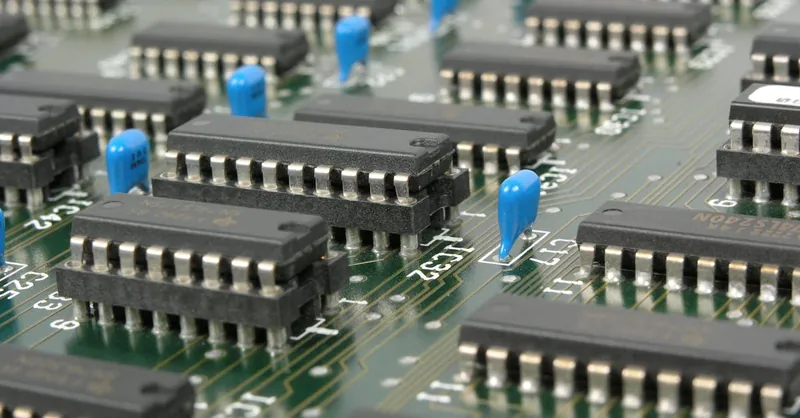
Image courtesy of Pixabay
Hardware Components and Architectures in Embedded Systems
A deep understanding of the hardware components and architectures that comprise embedded systems is crucial for developers working with Raspberry Pi, microcontrollers, and other embedded platforms. These systems rely on an interplay of microcontrollers or microprocessors, sensors, actuators, and communication interfaces—all optimized to work efficiently within constrained environments.
Microcontrollers vs. Microprocessors: Core Processing Units
At the heart of most embedded systems lies either a microcontroller or a microprocessor, each serving distinct roles:
-
Microcontrollers (MCUs)
Designed as compact, self-contained units, microcontrollers integrate a CPU core, memory (RAM and flash), and peripherals on a single chip. MCUs excel in resource-limited scenarios where dedicated tasks such as sensor reading, simple control logic, and user interface management are required. Popular MCU families include ARM Cortex-M, AVR (used in Arduino), and PIC. -
Microprocessors (MPUs)
Microprocessors typically consist of only a CPU core and rely on external memory and interfaces. These offer higher processing power suited for complex tasks such as multimedia processing, network communication, and running full operating systems like Linux on Raspberry Pi. Architectures like ARM Cortex-A and x86 fall under this category.
Understanding the trade-offs between microcontrollers and microprocessors helps you choose the appropriate hardware for your project’s performance, power consumption, and complexity requirements.
Sensors and Actuators: Bridging the Physical and Digital Worlds
Embedded systems interact with their environment through sensors and actuators, forming the essential input-output mechanisms:
- Sensors measure physical quantities—temperature, pressure, light, motion—and translate them into electrical signals. Common examples include accelerometers, gyroscopes, temperature sensors, and environmental sensors (humidity, gas).
- Actuators execute commands from the embedded system to influence the environment. These include motors, relays, LEDs, buzzers, and displays.
Integrating sensors and actuators effectively requires understanding signal conditioning, analog-to-digital conversion, and communication protocols like I2C, SPI, and UART, which interface the hardware components reliably with the processor.
Embedded Architectures: Balancing Performance and Efficiency
Embedded systems commonly utilize architecture designs tailored for low power consumption, real-time responsiveness, and deterministic control:
- Harvard Architecture separates memory for instructions and data, enabling faster operation and efficient pipeline management. Many microcontrollers adopt this architecture.
- Von Neumann Architecture uses a unified memory system but can suffer from bottlenecks; it is more common in microprocessors and general-purpose computing.
- Reduced Instruction Set Computing (RISC) architectures like ARM dominate embedded systems due to their streamlined instruction sets, which enhance speed and lower power draw.
Choosing the right architecture influences aspects like instruction execution speed, memory access latency, and overall system responsiveness.
By mastering these fundamental hardware components and architectural concepts, you’ll be empowered to architect embedded solutions that maximize efficiency, reliability, and scalability—whether you’re designing a sensor-driven IoT device or a sophisticated Raspberry Pi-based automation system.
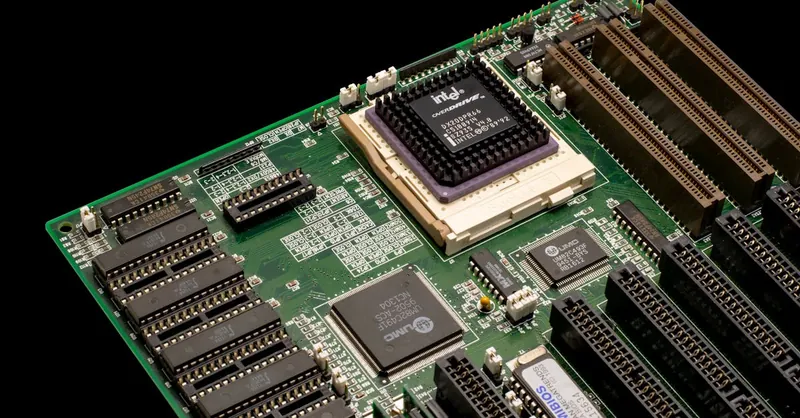
Image courtesy of Nicolas Foster
Programming Languages and Tools for Embedded Systems Development
Choosing the right programming languages and development tools is pivotal for efficient embedded systems projects, whether using Raspberry Pi, microcontrollers, or custom hardware. The most widely adopted languages in embedded development are C/C++, Python, and assembly, each offering unique advantages based on project requirements, hardware constraints, and performance goals.
C and C++: The Backbone of Embedded Programming
C remains the dominant language for embedded systems due to its close-to-hardware capabilities, efficient memory management, and broad industry support. Its low-level access to hardware registers, bit manipulation features, and predictable performance make C ideal for resource-constrained microcontrollers and real-time applications.
C++ extends C with object-oriented features, enabling modularity and code reuse, which benefits complex embedded projects involving hardware abstraction layers (HALs), device drivers, and RTOS integration. Modern embedded development increasingly adopts C++11/14 standards for safer and more expressive code, aiding maintainability without sacrificing efficiency.
Python: High-Level Scripting and Rapid Prototyping
While traditionally less common in embedded environments, Python has gained traction especially on platforms like Raspberry Pi and advanced microcontrollers supporting MicroPython or CircuitPython. Python excels at rapid prototyping, automation scripts, and higher-level application layers such as data logging, network communication, or user interfaces.
Its interpreted nature and extensive standard libraries allow developers to quickly write, test, and modify code, significantly reducing development time. However, Python’s runtime overhead means it’s better suited for embedded systems with ample resources or when performance-critical tasks are offloaded to lower-level languages.
Assembly Language: Precision Control At the Lowest Level
Assembly language programming is indispensable when utmost control, optimization, and minimal latency are necessary. Embedded developers use assembly for critical routines such as startup code, interrupt service routines (ISRs), and performance-sensitive algorithms. Though more complex and less portable than high-level languages, assembly offers unparalleled access to processor-specific instructions and registers.
Popular IDEs, Compilers, and Debugging Tools
The embedded systems ecosystem provides a rich set of Integrated Development Environments (IDEs) and toolchains optimized for various platforms and languages:
- IDEs:
- Visual Studio Code: Highly customizable with embedded extensions for C/C++ and Python.
- Eclipse Embedded CDT: Popular for C/C++ embedded projects with debugging and profiling support.
- Arduino IDE: Simple, beginner-friendly environment tailored for AVR and ARM microcontrollers.
-
PlatformIO: Cross-platform IDE supporting multiple boards, languages, and debugging interfaces.
-
Compilers:
- GCC (GNU Compiler Collection): The standard open-source compiler for C/C++ embedded development, with ARM GCC variants for Cortex-M and Cortex-A processors.
- Clang/LLVM: Emerging alternative with better diagnostics and optimizations.
-
Microchip MPLAB XC Compilers and IAR Embedded Workbench: Commercial compilers providing highly optimized code for specific microcontroller families.
-
Debugging Tools:
- GDB (GNU Debugger): Standard command-line debugger widely supported across toolchains.
- JTAG and SWD Debuggers: Hardware interfaces enabling in-circuit debugging and breakpoints on microcontrollers (e.g., Segger J-Link, ST-Link).
- Logic Analyzers and Oscilloscopes: Useful for analyzing communication protocols and timing-critical signals.
Mastering this ecosystem of programming languages and tools empowers embedded developers to write efficient, maintainable firmware, facilitate faster debugging cycles, and ultimately create robust, high-performance embedded systems tailored for their Raspberry Pi and microcontroller projects.

Image courtesy of Thirdman
Operating Systems for Embedded Devices: RTOS vs. Bare-Metal Programming
When developing embedded systems, one of the critical architectural decisions involves choosing between running a Real-Time Operating System (RTOS) or opting for bare-metal programming. Each approach offers distinct advantages depending on the complexity, timing requirements, and resource constraints of your project. Understanding when to utilize an RTOS versus a bare-metal setup is essential for optimizing performance, reliability, and development efficiency in embedded applications.
Real-Time Operating Systems (RTOS): Enabling Deterministic Multitasking
An RTOS is an operating system designed specifically for embedded systems that require strict timing and deterministic behavior. Unlike general-purpose OSes, RTOSes provide predictable task scheduling, low interrupt latency, and real-time task synchronization, making them ideal for time-critical applications such as robotics, industrial control, and automotive systems.
Key benefits of using an RTOS include:
- Multitasking and Task Prioritization – RTOSes support concurrent execution of multiple tasks with configurable priorities, allowing critical operations to preempt less important ones.
- Deterministic Timing – Guarantees response times within strict deadlines, critical for control loops, sensor data processing, and communication protocols.
- Inter-task Communication and Synchronization – Provides mechanisms like queues, semaphores, and mutexes for safe data sharing and coordination between tasks.
- Modularity and Scalability – Simplifies development and maintenance of complex applications through task abstraction and reusable code modules.
Popular RTOS options for embedded development on microcontrollers and Raspberry Pi environments include FreeRTOS, Zephyr, ChibiOS, and RTEMS. These systems often come with rich ecosystem support, debugging tools, and portability across various architectures.
Bare-Metal Programming: Direct Hardware Control Without an Operating System
Bare-metal programming refers to development without any operating system layer, where the application runs directly on the hardware. This approach grants complete control over the processor, peripherals, and memory, often yielding minimal latency and maximal efficiency. It is favored in simple, resource-constrained applications where overhead and complexity from an OS are unwarranted.
Advantages of bare-metal include:
- Minimal Resource Usage: No OS kernel or scheduler consumes RAM or CPU cycles, ideal for ultra-low-power or minimal-memory devices.
- Maximized Performance: Direct hardware access enables tight timing control and deterministic behavior without OS-induced jitter.
- Simplified Debugging: Without an OS abstraction, debugging focuses solely on application and hardware, reducing complexity.
However, bare-metal development demands careful design for managing concurrency and timing, often relying on interrupt service routines (ISRs) and state machines for task management. This can increase code complexity and maintenance effort in larger projects.
When to Choose RTOS vs. Bare-Metal
Consider the following factors when deciding between RTOS and bare-metal:
| Factor | RTOS | Bare-Metal |
|---|---|---|
| Project Complexity | Complex, multi-tasking applications | Simple, single-task or sequential logic |
| Real-Time Constraints | Strict, deterministic timing requirements | Moderate or simple timing requirements |
| Resource Availability | Moderate to high memory and CPU resources | Highly constrained memory and CPU usage |
| Development Time & Maintenance | Easier scalability and modularity | More manual control, potentially longer development |
| Hardware Environment | Microcontrollers supporting OS kernels & Raspberry Pi | Low-end microcontrollers with limited resources |
By mastering the trade-offs between RTOS and bare-metal programming, embedded developers can tailor their software architecture for optimal responsiveness, resource utilization, and reliability—whether crafting low-latency sensor nodes or multi-threaded Raspberry Pi automation systems. This insight ensures your embedded projects align perfectly with performance needs and hardware capabilities.
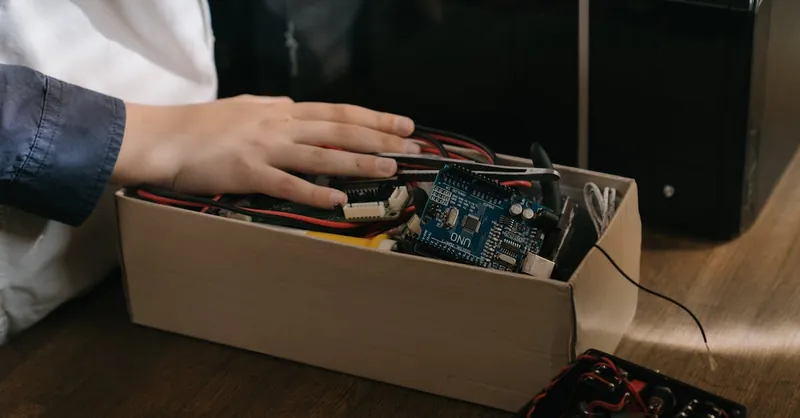
Image courtesy of cottonbro studio
Interfacing and Communication Protocols: Implementing UART, SPI, I2C, and CAN on Raspberry Pi and Microcontrollers
Efficient interfacing and communication protocols are fundamental to embedded systems development, enabling seamless data exchange between microcontrollers, sensors, actuators, and external devices. Mastering protocols such as UART, SPI, I2C, and CAN empowers Raspberry Pi and microcontroller developers to design scalable, reliable systems for diverse applications ranging from simple sensor reading to complex industrial networks.
UART (Universal Asynchronous Receiver/Transmitter)
UART is one of the simplest and most widely used serial communication protocols, ideal for short-distance, low-speed data exchange. It uses asynchronous transmission with configurable baud rates, data bits, parity, and stop bits. On Raspberry Pi, UART interfaces connect to GPS modules, serial consoles, or Bluetooth adapters, while microcontrollers use UART to communicate with PCs or peripheral devices.
- Implementation typically involves configuring UART registers or using libraries (e.g.,
pySerialfor Python on Raspberry Pi, or HAL drivers on STM32 MCUs). - Key features include point-to-point communication, full-duplex data transfer, and straightforward signal wiring (TX, RX, GND).
SPI (Serial Peripheral Interface)
The SPI protocol offers high-speed, full-duplex synchronous serial communication, frequently used for connecting microcontrollers with sensors, SD cards, displays, and other peripherals. It utilizes separate lines for clock (SCLK), master output slave input (MOSI), master input slave output (MISO), and chip select (CS).
- SPI is supported natively on Raspberry Pi’s GPIO pins and almost all microcontrollers.
- Advantages include fast data rates and simplicity, but it requires more I/O pins than I2C.
- Implementations leverage hardware SPI modules or can be bit-banged in software with careful timing management.
I2C (Inter-Integrated Circuit)
I2C is a two-wire, multi-master, multi-slave synchronous communication protocol widely used for connecting low-speed peripherals like EEPROMs, temperature sensors, and ADCs. It uses a shared clock (SCL) and data (SDA) line with addressing to differentiate devices on the bus.
- Raspberry Pi provides hardware I2C support accessible via libraries such as
smbusin Python, while microcontrollers use dedicated I2C peripherals or software-driven implementations. - I2C’s simplicity and reduced wiring complexity make it ideal for compact embedded designs.
- Key concepts include start/stop conditions, acknowledgment bits, and addressing modes.
CAN (Controller Area Network)
CAN is a robust, multi-master, message-oriented protocol designed for reliable communication in noisy environments, widely prevalent in automotive and industrial embedded systems. Unlike UART, SPI, or I2C, CAN operates using message frames with error detection and fault confinement.
- Though less common on standard Raspberry Pi models, CAN support is achievable via add-on CAN shields or HATs and dedicated transceivers.
- Microcontrollers often integrate CAN controllers internally, simplifying implementation in embedded designs requiring real-time communication and high noise immunity.
- Implementation demands understanding CAN bus timing, arbitration, and message filtering techniques.
Practical Implementation Tips
- Choose the Right Protocol Based on Application Needs:
- Use UART for simple serial links;
- SPI when speed and full-duplex communication are priorities;
- I2C to connect multiple low-speed peripherals efficiently;
-
CAN for robust, fault-tolerant networks in harsh conditions.
-
Leverage Platform-Specific Libraries and Drivers:
- Raspberry Pi supports these protocols via Python libraries (
pySerial,spidev,smbus2) and Linux device drivers; -
Microcontrollers provide hardware abstraction layers (HAL) with standardized APIs to simplify peripheral configuration.
-
Consider Electrical and Timing Constraints:
- Use appropriate pull-up resistors for I2C;
- Match SPI clock speeds to peripheral specifications;
- For CAN, ensure correct termination resistors and bus wiring to maintain signal integrity.
In-depth knowledge and practical experience in interfacing and communication protocols not only enable smooth hardware integration but also facilitate optimized data flow and enhanced system reliability. By mastering how to implement UART, SPI, I2C, and CAN on Raspberry Pi and microcontrollers, embedded developers gain the crucial skills needed to build versatile, scalable, and high-performance embedded applications.
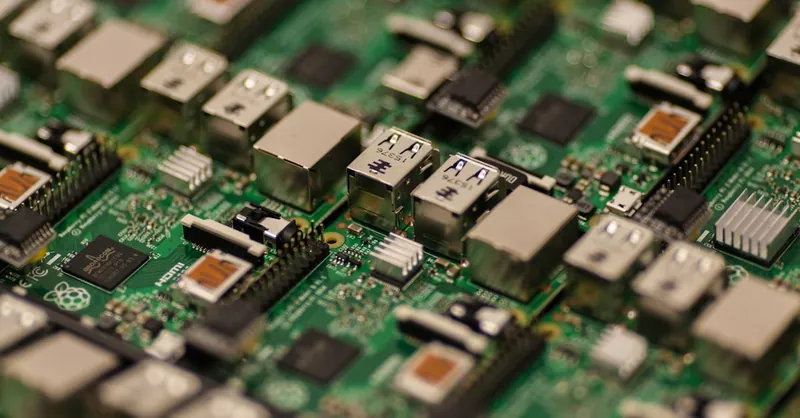
Image courtesy of Craig Dennis
Embedded Software Development Lifecycle: From Requirements to Deployment
Developing effective embedded systems goes beyond writing code; it requires a structured software development lifecycle (SDLC) tailored to embedded environments. An organized approach ensures that your Raspberry Pi or microcontroller projects meet functional requirements, perform reliably in resource-constrained conditions, and remain maintainable over time.
Key Phases of Embedded Software Development
-
Requirements Analysis and Specification
Clearly defining functional, performance, and hardware interface requirements is critical. For embedded projects, this includes specifying timing constraints, power consumption targets, and interaction with sensors or actuators. A detailed requirements document guides architecture decisions and helps prevent costly redesigns. -
System Design
This phase involves architecting both hardware-software integration and software components, deciding on bare-metal or RTOS approaches, communication protocols, and peripheral handling strategies. Design artifacts such as flowcharts, state machines, and interface diagrams improve clarity and facilitate collaboration. -
Implementation and Coding
Writing efficient, readable, and modular code using C/C++, Python, or other suitable languages is crucial. Leveraging hardware abstraction layers (HALs), adopting coding standards, and integrating version control systems like Git promote code quality and traceability. -
Testing and Verification
Rigorous testing—including unit tests, integration tests, and hardware-in-the-loop (HIL) testing—is essential for verifying correctness and real-time performance. Employing automated testing tools and continuous integration pipelines enhances reliability and speeds up debugging cycles. -
Deployment and Maintenance
Embedded software often requires firmware flashing or OTA (over-the-air) updates. Maintaining software involves monitoring field performance, patching bugs, and optimizing code to adapt to evolving hardware or new requirements. A robust version control and maintenance strategy reduces downtime and extends product lifecycle.
Best Practices for Version Control, Testing, and Maintenance in Embedded Systems
-
Version Control (Git):
Always use a distributed version control system like Git to manage your source code. Branching strategies such as GitFlow help organize feature development and bug fixes. Commit messages should be clear and descriptive for traceability. -
Automated Testing:
Embed unit testing frameworks (e.g., Unity for C) into your workflow to catch bugs early. Simulate hardware conditions with mock interfaces and utilize continuous integration (CI) services that can build and test firmware automatically on each commit. -
Code Reviews and Static Analysis:
Conduct code reviews to ensure adherence to coding standards. Incorporate static code analysis tools (like Cppcheck or Coverity) to detect memory leaks, buffer overflows, and potential concurrency issues before deployment. -
Documentation and Traceability:
Maintain comprehensive project documentation, including requirement traceability matrices, API references, and hardware interface specifications. Good documentation supports maintenance, onboarding of new developers, and future enhancements.
Embedding these lifecycle stages and best practices into your development workflow not only enhances the quality, robustness, and maintainability of your embedded projects but also aligns with industry standards and optimizes delivery timelines. Whether you're deploying firmware for a microcontroller sensor node or a complex Raspberry Pi automation system, adopting a disciplined embedded software development lifecycle is key to success.

Image courtesy of Markus Spiske
Power Management and Optimization Techniques: Strategies for Low Power Consumption, Real-Time Performance Tuning, and Memory Management in Constrained Environments
In embedded systems development, especially with Raspberry Pi and microcontrollers, power management and optimization techniques play a pivotal role in maximizing device longevity, ensuring real-time responsiveness, and efficiently utilizing limited memory resources. Achieving low power consumption without compromising performance requires a deep understanding of hardware capabilities and software strategies tailored for resource-constrained environments.
Strategies for Low Power Consumption
Minimizing power usage extends battery life and reduces thermal stress, which is critical in portable, IoT, and remote sensing applications. Key techniques include:
- Dynamic Voltage and Frequency Scaling (DVFS): Adjusting CPU voltage and clock speeds on-the-fly based on workload reduces power draw during idle or low-demand periods.
- Sleep and Low-Power Modes: Leveraging microcontroller-specific power modes (e.g., standby, stop, or deep sleep) disables unused peripherals and halts the core while retaining state, dramatically lowering current consumption.
- Peripheral and Sensor Power Control: Selectively powering down sensors or communication modules when inactive, and using interrupt-driven wake-ups to conserve energy.
- Efficient Code Design: Writing lean firmware with minimal computational overhead and avoiding busy-wait loops reduces unnecessary CPU cycles that waste power.
Implementing these methods requires close coordination between hardware features and software routines, making power profiling an essential part of the embedded development lifecycle.
Real-Time Performance Tuning
Optimizing real-time responsiveness ensures your embedded device meets strict timing constraints essential for control systems, sensor data processing, and communication protocols:
- Prioritized Task Scheduling: Utilizing RTOS capabilities or carefully optimized bare-metal interrupt handling to prioritize time-critical tasks.
- Minimizing Interrupt Latency: Writing concise Interrupt Service Routines (ISRs) and deferring complex processing to lower-priority threads or tasks helps maintain system responsiveness.
- Efficient Use of DMA (Direct Memory Access): Offloading data transfers to DMA controllers reduces CPU load and latency, freeing processing cycles for real-time operations.
- Profiling and Benchmarking: Employ runtime profiling tools and timers to identify bottlenecks and tune algorithm execution paths, ensuring deterministic performance.
Memory Management in Constrained Environments
Embedded devices typically have limited RAM and storage, requiring careful memory usage to maintain stability and efficiency:
- Static Memory Allocation: Favor fixed-size buffers and pre-allocated memory over dynamic allocation to avoid fragmentation and unpredictable behavior.
- Memory Pooling and Buffer Reuse: Implement reusable memory pools for commonly used data structures to minimize overhead and allocation time.
- Code Size Optimization: Utilize compiler optimization flags, link-time optimization, and remove unused code sections to reduce flash memory footprint.
- Data Access Patterns: Organize data structures and memory access to leverage cache locality, reducing access latency and power consumption on architectures with caches.
By incorporating advanced power management, fine-tuned real-time scheduling, and memory optimization into your embedded development workflow, you can create robust, efficient, and sustainable Raspberry Pi or microcontroller projects. These strategies not only extend device operational life but also elevate system reliability and performance, crucial for professional-grade embedded applications.
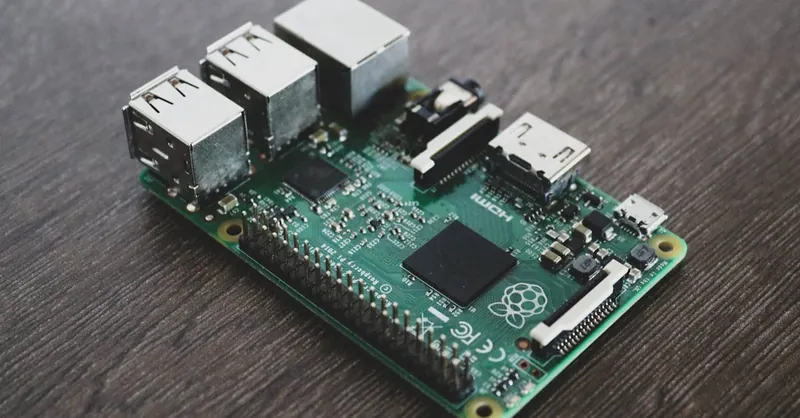
Image courtesy of Alessandro Oliverio
Debugging and Troubleshooting Embedded Systems: Tips and Tools for Diagnosing Hardware and Software Issues Effectively
Debugging embedded systems can often be a complex and time-consuming process due to the tight integration of hardware and software, real-time constraints, and limited visibility into internal operations. Mastering effective debugging and troubleshooting techniques is essential for Raspberry Pi enthusiasts and microcontroller developers aiming to build reliable, high-performance embedded applications.
Common Challenges in Embedded Systems Debugging
-
Limited Visibility into System State
Unlike desktop applications, embedded systems may lack standard output devices like screens or keyboards, making it harder to observe program behavior directly. Developers must rely on peripherals such as UART serial consoles, LEDs, or debug interfaces to gather insights. -
Timing and Concurrency Issues
Real-time constraints, interrupt-driven workflows, and multitasking introduce complex timing bugs, race conditions, and deadlocks that are often elusive without proper tools. -
Hardware-Software Interaction Faults
Malfunctioning sensors, loose connections, improper signal timing, or power-related glitches can cause erratic software behavior that requires holistic debugging approaches.
Essential Debugging Tools for Embedded Development
-
In-Circuit Debuggers (JTAG, SWD):
Hardware debug interfaces like JTAG and Serial Wire Debug (SWD) enable step-by-step code execution, breakpoints, watchpoints, and register inspection directly on the target microcontroller. Tools such as Segger J-Link or ST-Link integrate with IDEs for seamless firmware debugging. -
Serial Debug Output:
Using UART to print debug logs is a lightweight yet powerful method often employed on Raspberry Pi and microcontrollers. Libraries likeprintfin C orloggingin Python facilitate runtime diagnostics without halting execution. -
Logic Analyzers and Oscilloscopes:
For low-level signal analysis and timing verification, tools like logic analyzers detect communication protocol problems (SPI, I2C, CAN), digital glitches, or hardware faults, providing invaluable information for hardware-software integration troubleshooting. -
Software Debugging Techniques:
- Unit Testing: Writing modular test cases helps isolate software bugs early in development.
- Static Code Analysis: Tools such as Cppcheck or PVS-Studio catch memory leaks, buffer overflows, and resource mismanagement before runtime.
- Runtime Profiling: Performance analysis tools assist in identifying bottlenecks and inefficiencies impacting system responsiveness.
Best Practices for Effective Troubleshooting
-
Reproduce and Isolate Issues Systematically:
Narrow down complex problems by isolating individual hardware modules or software components, and replicate bugs in controlled conditions to understand root causes. -
Leverage Logging and Monitoring:
Use configurable debug levels to balance the amount of diagnostic data with performance impact, enabling meaningful traceability without overwhelming system resources. -
Validate Hardware Connections and Power Supply:
Verify wiring, sensor signals, and stable power delivery early to exclude hardware faults before diving deeply into software debugging. -
Incremental Development and Testing:
Build projects in modular increments with thorough validation at each step to catch integration issues early, preventing compounded complexity.
By incorporating robust debugging strategies and leveraging specialized tools, embedded developers can drastically reduce development cycles and improve system stability. These capabilities are vital for delivering reliable, fault-tolerant Raspberry Pi and microcontroller-based projects that perform consistently in real-world embedded environments.
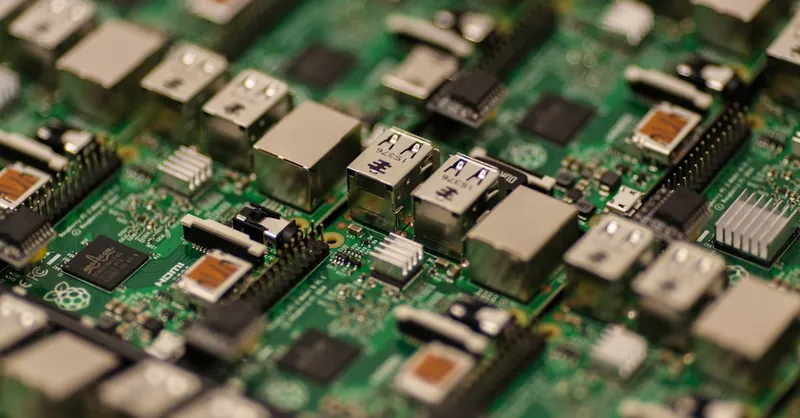
Image courtesy of Craig Dennis
Security Considerations in Embedded Development: Protecting Your Devices from Vulnerabilities
As embedded systems become increasingly integrated into critical applications—from home automation and wearable tech to industrial IoT and automotive controls—security considerations have grown paramount in the embedded development landscape. Embedded devices, including Raspberry Pi and microcontroller-based projects, often face unique vulnerabilities due to their widespread deployment, constrained resources, and diverse network connectivity. Understanding potential attack vectors and implementing robust security measures is essential for safeguarding your embedded projects from unauthorized access, data breaches, or malicious manipulation.
Common Vulnerabilities in Embedded Systems
Embedded devices can be susceptible to several security risks stemming from both hardware and software weaknesses:
-
Insecure Boot and Firmware Updates
Without secure boot mechanisms, attackers can load unauthorized firmware, compromising device integrity. Lack of encrypted or verified OTA (Over-the-Air) updates further exposes devices to injection of malicious code. -
Weak or Hardcoded Credentials
Many embedded systems use default passwords or hardcoded cryptographic keys, making them vulnerable to simple brute force or credential leakage attacks. -
Unprotected Communication Channels
Data transmitted over unsecured protocols (e.g., plain UART, unencrypted I2C) or exposed wireless interfaces can be intercepted or tampered with, leading to data leakage or command spoofing. -
Insufficient Access Controls
Limited user authentication or authorization mechanisms on device interfaces (web UI, network services) allow unauthorized users to manipulate system settings or firmware. -
Buffer Overflows and Memory Corruption
Embedded software, especially in C/C++, is prone to coding errors such as buffer overflows that malicious actors may exploit to execute arbitrary code or crash systems.
Strategies to Secure Embedded Systems
To mitigate these vulnerabilities and enhance embedded device security, developers should adopt a holistic approach encompassing hardware, firmware, and communication layers:
-
Implement Secure Boot and Firmware Authentication
Utilize cryptographic signatures and hash verification during boot and firmware updates to ensure only trusted code runs on the device. -
Use Strong, Unique Credentials and Key Management
Replace default passwords with strong, device-unique credentials and employ secure storage mechanisms like hardware security modules (HSM) or secure elements when available. -
Encrypt Sensitive Data and Communication
Apply TLS/SSL protocols for network communication, and encrypt sensitive data stored on the device to prevent eavesdropping and data theft. -
Harden Network and Physical Access Controls
Disable unused interfaces and ports, enforce strict firewall rules, and physically secure embedded devices to reduce attack surfaces. -
Enforce Secure Coding Practices
Conduct code reviews, use static analysis tools, and adopt memory-safe programming techniques to prevent common vulnerabilities like buffer overflows and injection attacks. -
Regularly Update Firmware and Monitor Security
Provide mechanisms for timely security patches and updates, and implement logging and intrusion detection capabilities to monitor anomalous behavior.
Embedding these security principles within your development workflow not only protects your Raspberry Pi and microcontroller projects from cyber threats but also builds user trust and ensures compliance with emerging IoT security standards. Prioritizing embedded system security is indispensable for creating resilient, trustworthy devices that perform reliably in increasingly connected and adversarial environments.

Image courtesy of Pixabay
Case Studies and Project Ideas: Real-World Examples and Project Inspirations for Raspberry Pi and Microcontroller-Based Embedded Systems
Exploring real-world case studies and hands-on project ideas is a vital step to deepen your understanding of embedded systems development while sparking your creativity. Whether you are working with Raspberry Pi or microcontrollers, applying theoretical concepts in practical projects solidifies your skills in programming, hardware interfacing, and system optimization. Here are several compelling examples and project inspirations that showcase how embedded systems power innovative solutions across diverse domains.
1. Smart Home Automation with Raspberry Pi and ESP32
A classic embedded project integrating the Raspberry Pi as the central hub with ESP32 microcontrollers managing distributed sensor nodes illustrates the synergy of real-time data collection, wireless communication, and cloud integration. Features commonly implemented include:
- Environmental monitoring (temperature, humidity, air quality) with I2C sensors.
- Actuator control such as smart lighting or motorized blinds using GPIO and PWM signals.
- MQTT protocol implementation for lightweight, scalable messaging.
- Python-based server scripts on the Raspberry Pi to automate routines and provide a user-friendly dashboard.
This project highlights the orchestration of multiple embedded protocols and programming layers, demonstrating practical RTOS use on microcontrollers and versatile Python scripting on SBCs.
2. Autonomous Robotics Using Microcontrollers and Real-Time Systems
Building an autonomous robot platform is an excellent challenge that showcases embedded systems’ real-time control and sensor fusion capabilities. By leveraging a Cortex-M microcontroller running an RTOS like FreeRTOS, you gain:
- Precise motor control through PWM and encoder feedback loops.
- Real-time sensor data acquisition using SPI and I2C interfaces for ultrasonic, infrared, and gyroscope sensors.
- Task scheduling to balance navigation, obstacle detection, and communication.
- Firmware written in C/C++ optimized for low latency and deterministic execution.
Integrating wireless modules (e.g., Bluetooth or Wi-Fi) offers remote control and telemetry, further highlighting communication protocols and security practices.
3. Data Logger for Environmental Monitoring with Low Power Optimization
Designing a battery-powered data logger using a low-power microcontroller (e.g., ARM Cortex-M0+) paired with sensors is a practical embedded project focused on power management:
- Utilize deep sleep modes and timer interrupts to wake periodically for sensor readings.
- Store sensor data in external EEPROM or SD card via SPI to preserve memory.
- Implement data transmission to Raspberry Pi base stations using low-power wireless protocols like LoRa or BLE.
- Optimize firmware for minimal power drain while ensuring data integrity and real-time responsiveness.
This project exemplifies balancing resource constraints and efficient embedded software design for long-term deployments.
4. Custom IoT Gateway Combining Raspberry Pi and Embedded Clients
For developers interested in IoT ecosystem design, creating a custom gateway using Raspberry Pi to collect, process, and forward data from a network of embedded clients is an instructive endeavor:
- Implement secure MQTT brokers on Raspberry Pi to handle messaging.
- Interface microcontroller nodes through UART or SPI, leveraging strong protocol design.
- Application-level programming for data aggregation, anomaly detection, and cloud integration.
- Emphasize firmware update mechanisms to support OTA updates and firmware security.
Such a project merges embedded development, networking, and security considerations to provide a scalable IoT solution.
By immersing yourself in these diverse embedded systems projects, you gain firsthand experience with the programming languages, hardware components, communication protocols, and optimization techniques previously discussed. These case studies serve not only as practical blueprints but also as springboards for innovation tailored to your interests, helping you evolve from a Raspberry Pi and microcontroller hobbyist to a proficient embedded systems developer capable of tackling complex, real-world challenges.
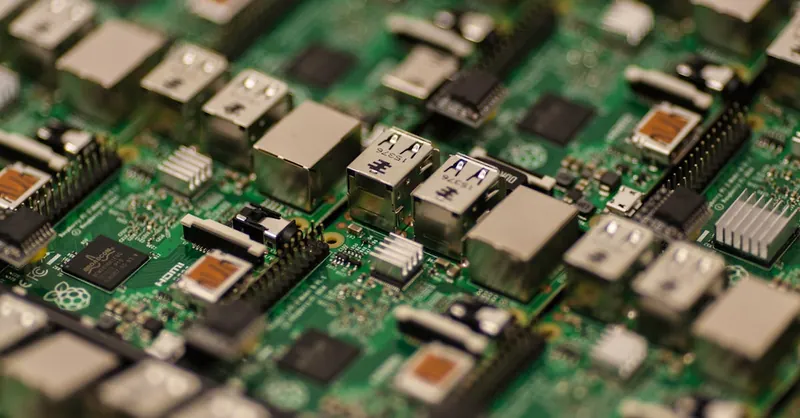
Image courtesy of Craig Dennis
